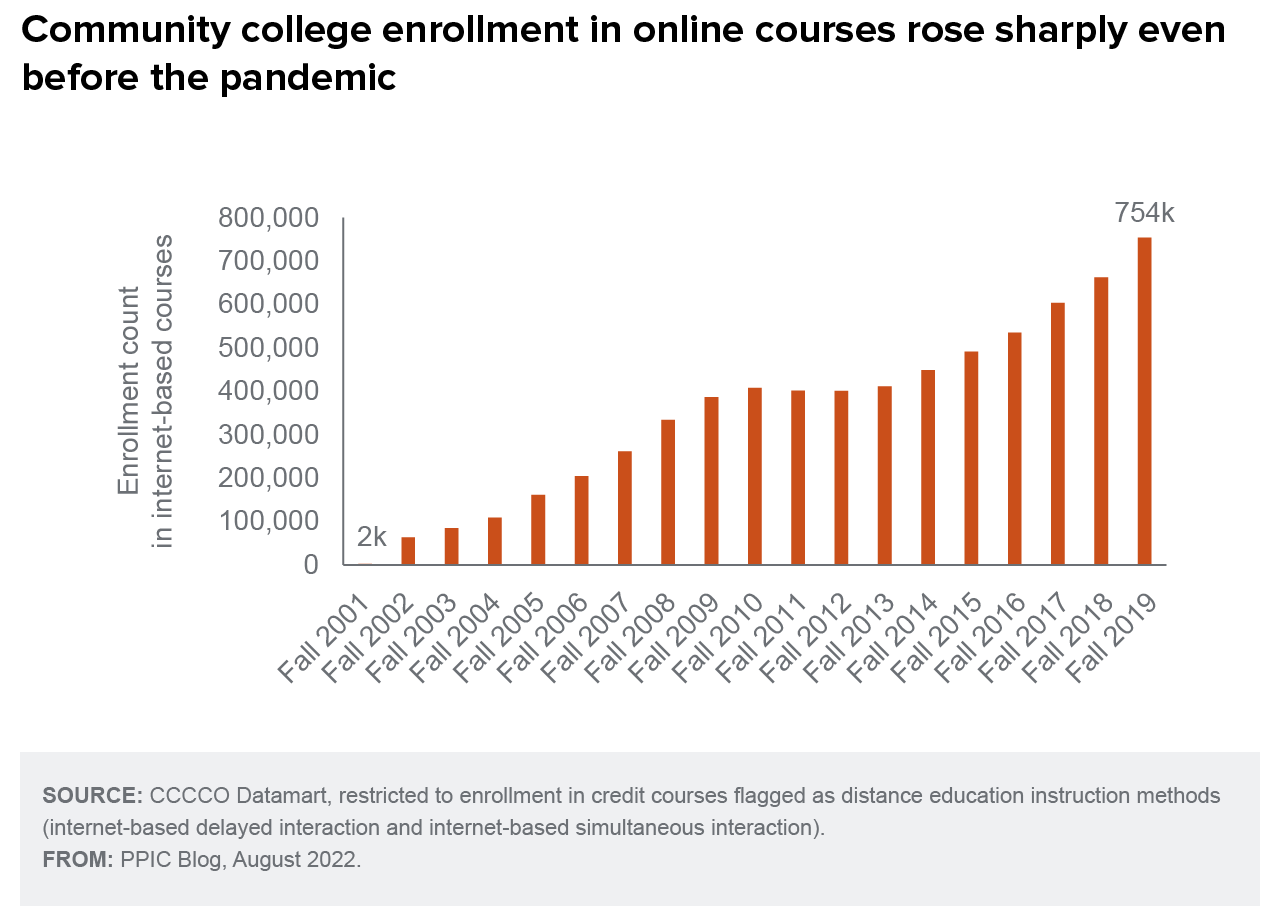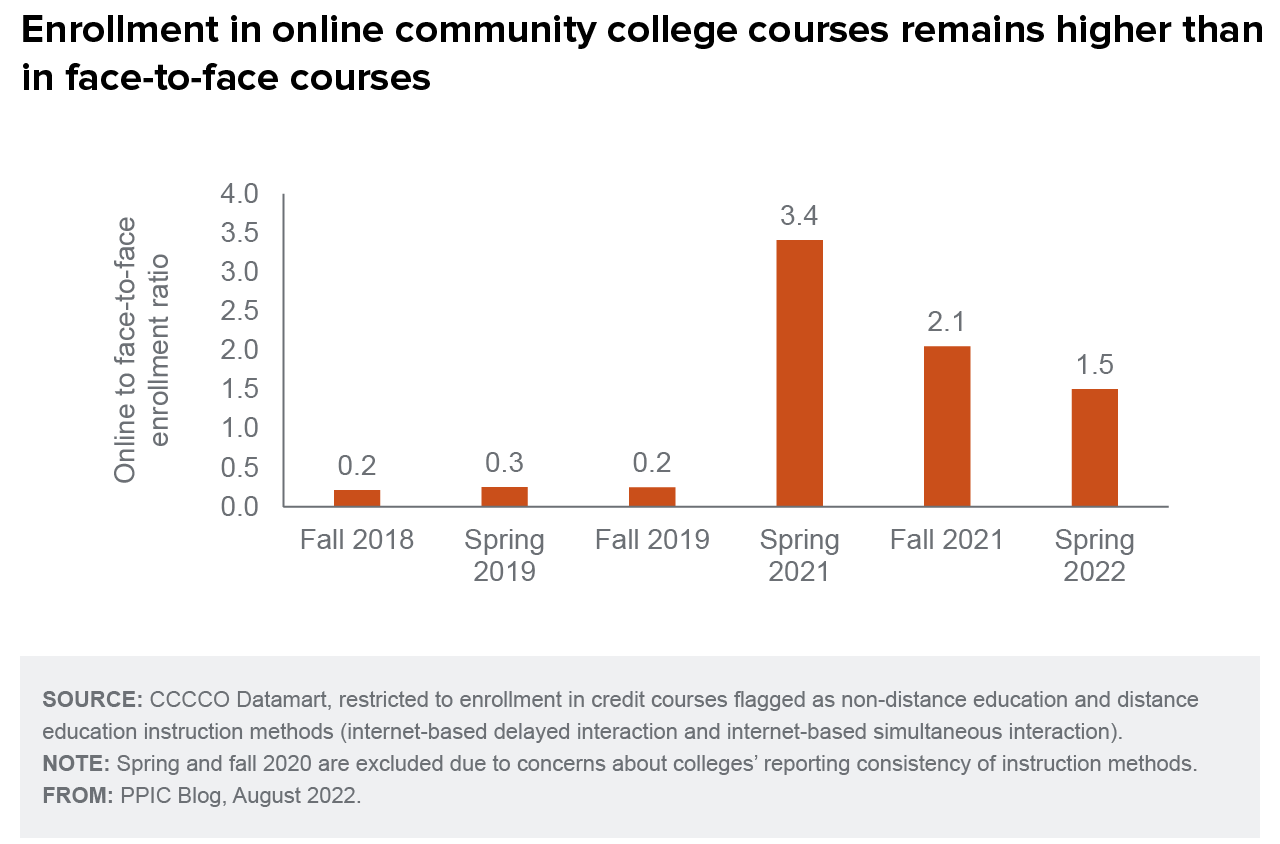In spring 2020, the COVID-19 pandemic forced California’s community colleges to switch to fully online instruction to serve the system’s 2.1 million students in a time of crisis. Today, not all students are eager to go back to traditional face-to-face instruction, and prospective students have cited access to online courses as the most important factor motivating enrollment. Ensuring that colleges, faculty, and students have the resources they need to be successful in online courses—including access to technology—will be vital to help meet growing student demand for more flexibility and to improve access, completion, and equity in our higher education systems.
The demand for online courses is not entirely new. Pre-pandemic, community college enrollment in online courses was already on the rise. Between 2001, when internet-based courses were first offered, and 2019, enrollment grew substantially. In fall 2019, the share of enrollment in online courses reached almost 20% of total course enrollments. And to meet student demand, community colleges were increasing the number of online programs.

In the second year of the pandemic, community colleges started to encourage students and faculty to go back to in-person courses, but online enrollments remained high, with over three times more enrollments in online courses than face-to-face courses in spring 2021. In spring 2022, there were still about 50% more enrollments in online instruction than in face-to-face instruction. In contrast, prior to the pandemic, there were only about a fifth as many online enrollments as face-to-face enrollments.

With online learning and hybrid formats quickly becoming part of the new normal, it is critical that these forms of instruction be as effective as in-person learning. High-quality online courses tend to follow standards related to course design, student interaction and collaboration, assessment, learner support, and accessibility. However, creating high-quality online courses is not necessarily cheap or easy, and the current evidence on academic outcomes in online college courses is mixed. Given the high volume of community college courses—over 118,000 credit courses in spring 2022 alone—even if a small fraction were to remain online or hybrid, investing in quality online instruction that produces similar outcomes to face-to-face courses would require enormous effort and resources.
The California Community College Chancellor’s Office (CCCCO) has provided funding to help colleges implement high-quality online teaching and learning through several initiatives. The Online Education Initiative supports faculty in using rigorous standards and rubrics for online courses. The CCCCO also supports the Online Network of Educators, which provides training on digital tools and platforms. Other initiatives provide colleges with high-speed internet and technology. In addition, individual colleges sometimes provide training. For example, Skyline College offers faculty support in using online learning management systems and improving online pedagogy.
However, these initiatives frequently rely on the motivation and interest of individual faculty and departments, and faculty are not always compensated for engaging in these activities. A sustained, systematic approach that supports online course development and delivery—and that promotes best practices in online education—is necessary to speed up the adoption of high-quality standards for online courses. Similarly, ensuring that all faculty and students have access to resources like broadband internet and computing devices, and that students have access to counseling and tutoring services, will be vital.
Since student demand for online education is likely to remain high in the coming years, providing appropriate incentives for faculty and colleges to improve online instruction—and broadening student access to online services and resources—will help ensure that online courses are delivered effectively and equitably.




